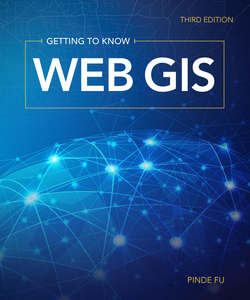Читать книгу Getting to Know Web GIS - Pinde Fu - Страница 6
На сайте Литреса книга снята с продажи.
ОглавлениеForeword
By Clint Brown, Esri
Much can be said about trends in information technology (IT). Perhaps first and foremost is the growing recognition and acceptance that GIS has evolved into an essential IT. GIS will be at the center of major advances in computing and IT. And many people are coming to the realization that geospatial expertise and systems will be essential for our planet’s future.
Cloud computing—combined with IoT, smartphones, machine learning, and apps—enables an instrumented world where computing can be harnessed to analyze and respond to virtually any issue. GIS is already playing a critical role in these initiatives.
Web GIS provides a comprehensive approach for working with virtually all information sources. Further, the data in each individual organizational GIS is being brought together virtually to create a comprehensive GIS of the world in the cloud. Each of us is creating and maintaining our own layers; because all GIS layers register onto the earth, we are also contributing to and assembling a larger societal GIS for our planet—our individual GIS systems of record are being integrated, extended, and deployed as systems for insight as well as communal systems for engagement.
Virtually everyone is gaining access to this comprehensive, virtual GIS via web connections. GIS maps and apps are enabling all kinds of opportunities and engagements that extend far beyond our original system visions and goals.
In the past decade, GIS has expanded far beyond the professional GIS community. Some interesting developments helped to drive this expansion. As apps became popular, people everywhere began to use online maps—the foundation for shared GIS. Almost overnight, everyone began to recognize the power of GIS as an enabling information platform for improved understanding, decision-making, efficiency, and communication.
GIS provides a geospatial framework to integrate and interpret results. Over the past few decades, the mass adoption of the internet has led to a glut of information that we have come to know as “big data.” GIS provides a geographic context to make sense of it all, while also providing the capability and context to analyze that data in real time.
People everywhere now recognize that GIS has become an essential computing infrastructure for every organization. Consequently, we expect the reach and impact of GIS to continue to expand at an accelerating pace.
